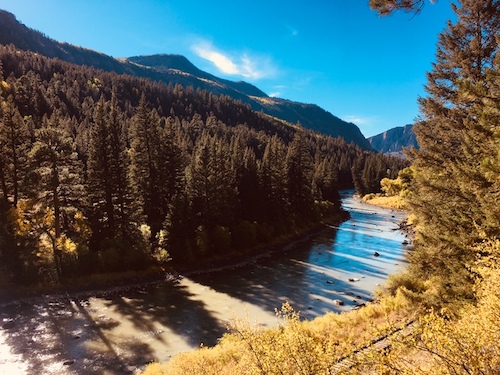Rio Grande Recreational Flow Study
 In partnership with the Rio Grande Headwaters Restoration Project, and supported by grants from the Colorado Water Conservation Board and foundations, American Whitewater completed a Recreational Needs Assessment as part of a Rio Grande Basin Stream Management Planning effort (SMP). The final report was completed in March 2020 and can be read in full here.
In partnership with the Rio Grande Headwaters Restoration Project, and supported by grants from the Colorado Water Conservation Board and foundations, American Whitewater completed a Recreational Needs Assessment as part of a Rio Grande Basin Stream Management Planning effort (SMP). The final report was completed in March 2020 and can be read in full here.
American Whitewater has completed similar assessments in the Colorado, Yampa, Dolores, Gunnison, and San Miguel watersheds and we are excited to expand our work to the Rio Grande Basin in Southern Colorado. The Needs Assessment will help to define a baseline for existing recreation opportunities in the basin, identify areas where enhancements to recreational use can be prioritized, and can be used to assess how new water projects and changing hydrological conditions could impact these recreation opportunities. We have worked closely with local stakeholders to implement the assessment and integrate it into the Stream Management Plan. As a member of the Technical Advisory Team (TAT) for the SMP, we are working alongside hydrologists, irrigators, public land managers, wildlife researchers, municipalities and others to ensure that the needs of every stakeholder are addressed in the SMP process. Stream Management Planning in the Rio Grande Basin began in the Spring of 2018 and is a multi-year project. Although the initial Needs Assessment is now complete, American Whitewater will stay engaged in the SMP process to help with project implementation and assess the impact of future hydrological conditions and projects on recreation opportunities.
The first step in the Recreational Needs Assessment is to conduct Flow Evaluation Studies for each river segment by surveying a wide range of recreational boaters. Through coordination with the Restoration Project and the TAT, we collectively identified the following 11 priority river segments:
The Flow Evaluation Study results were used to define optimal and acceptable flow ranges for boating on these 11 river segments, and the resulting flow criteria were used to inform the Boatable Days Analysis. The Flow Survey was released in late 2018 and American Whitewater worked with local stakeholders and the Restoration Project to circulate the survey throughout the community. We received 136 overall responses to the survey, although some individual segments had a significantly lower response rate.
Once the flow preferences were determined, AW worked with the TAT to complete the Boatable Days Analysis. This analysis establishes a metric describing the number of days that streamflow conditions (cfs) meet the identified acceptable and optimal flow ranges (i.e., a boatable day). In the analysis, the flow criteria for each reach are compared to historical flow data to identify the number of boatable days under multiple hydrological year-types (dry, average, wet).
The results from the combined flow preference and boatable days analyses give us a baseline understanding of the existing recreation opportunities that exist on the 11 different segments in the study and create the basis for the boatable days model. The boatable days model will be used to evaluate how future projects and hydrological scenarios may impact existing boating opportunities. The model will be able to assess negative and positive impacts from scenarios such as dams, diversions, shifting water uses, and changing climates. Throughout this process, American Whitewater will work closely with the TAT, Rio Grande Headwaters Restoration Project and project proponents to determine which hydrological scenarios and projects need to be evaluated using the boatable days model. For example, the Colorado Water Plan outlines Identified Projects and Process (IPPs) for reaching water storage goals throughout the State and it will be important to evaluate the impact of these IPPs on recreation in the Rio Grande Basin using the Boatable Days Tool. The final SMP is scheduled to be completed in the Spring of 2020 and the Recreation Needs Assessment will be included in the SMP.
American Whitewater is excited at the opportunity to expand the boatable days metric to other basins in Colorado, working towards a common metric throughout the state for non-consumptive recreational needs. The outputs from the boatable days Analysis will inform key trade-off discussions within the Rio Grande Basin and between other basins.
American Whitewater’s Rio Grande and Conejos River Recreational Needs Assessment Project is funded by a grant from the State of Colorado, Colorado Water Conservation Board with matching funding provided by the Walton Family Foundation's Innovation Fund and individual contributions.
Photo provided by Daniel Boyes
